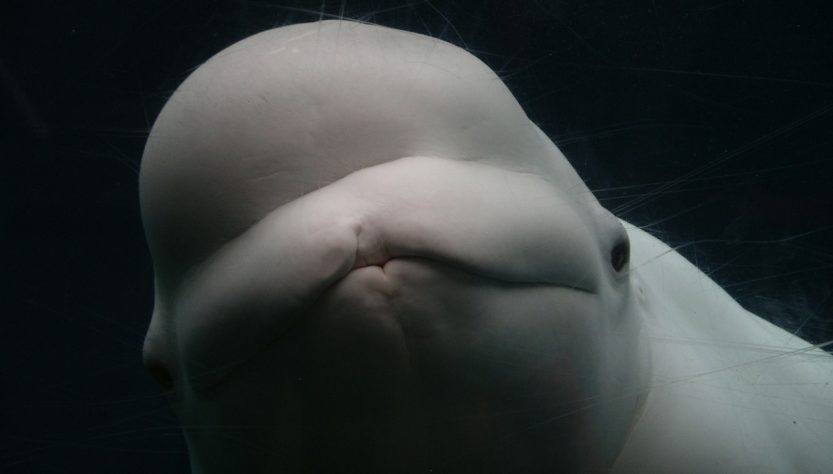Beluga whales are highly sociable marine mammals and they are known for their friendly, playful approach towards people. These ‘white whales’ can be found across the Arctic Ocean and its nearby seas along the Northern Hemisphere, particularly in the waters off Alaska, Canada, Greenland, and Russia. Aside from its light complexion, the beluga whale is mostly recognized for its head which is shaped like a melon.
In a new study earlier in March 2024, scientists found that belugas change the shape of their “melons” or “melon heads” during intra-species communication or social interactions with one another. The researchers believe that this morphological feature is a form of visual communication used by beluga whales to express themselves and communicate. This is somehow comparable to facial expressions among humans.
Melon Heads Change Shape
![Beluga Whales Change the Shape of Their 'Melon' Heads During Intra-Species Communication [Study] Beluga Whales Change the Shape of Their 'Melon' Heads During Intra-Species Communication [Study]](https://1471793142.rsc.cdn77.org/data/images/full/69847/beluga-whales-change-the-shape-of-their-melon-heads-during-intra-species-communication-study.jpg?w=820)
Based on a research paper published in the journal Animal Cognition on March 2, researchers from the University of Rhode Island in Kingston, United States, confirm the changing shape of beluga whales’ melon heads. This conclusion comes from the context that only anecdotal observations were only available to provide evidence of the use or potential function of the melon shapes. The research team found this is a form of beluga communication.
This recent study of beluga whales is conducted in a professionally managed setting with the objective of establishing an ethogram for knowledge about the different types of melon head shapes. This assessment will then lead to the evaluation of the melon shapes’ potential function as intentional communication signals rather being accidental, according to the Rhode Island university researchers.
Also Read: Researchers Detected Traces of Microplastics in Beluga Whale’s Stomach, as Proof of Worsening Contamination
Are Beluga Whales Friendly?
Being sociable mammals, beluga whales (Delphinapterus leucas) live, hunt, and migrate as pods, consisting of few individuals to hundreds of whales.
According to the World Wildlife Fund (WWF), beluga whales are capable of producing a series of sounds, ranging from chirps to clicks, squeals, and whistles. These noises may seem gibberish for humans but they are meaningful to their fellow belugas.
While beluga whales are predators that feed on crustaceans, fish, and mollusks, they are not at the top of the food chain, mainly for being “slow swimmers” and lacking dorsal fins. This vulnerability makes belugas prey for polar bears and even killer whales or orcas.
In terms of historical records, there has been no instance that the friendly melon head animals have killed a person. This applies to belugas in captivity.
Beluga Whale Threats
With a remaining global population of over 150,000, the conservation status of beluga whales is “near threatened,” according to the WWF. Beluga whale threats come in various forms that are caused by both anthropogenic and natural factors.
The NOAA Fisheries highlights some of the following stressors and threats to beluga whale populations:
- pollution
- shipping
- energy exploration and development
- commercial fishing
- extreme weather events
- strandings
- predation
- underwater noise
- subsistence harvesting
Related Article: Sea Ice Loss Endangers Migrating Beluga Whales from the Arctic
© 2024 NatureWorldNews.com All rights reserved. Do not reproduce without permission.

